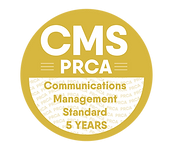The changing face of identity
30 June 2020 - by Erin DelaneyIdentity is an incredibly important feature of this small place of 1.9 million people, which is one of the most researched societies in the world.
No matter what determinant is used, whether it is religion, ethnicity, political affiliation or nationality, natives and many non-natives alike, will, at least broadly, understand the ‘dichotomy’ of Northern Ireland. The use of phrases such as ‘the two communities’ and ‘the divide’ are commonplace in literature, print, tv, radio and day-to-day conversations.
References to religious, ethnic, national and political identities, amongst others, are used interchangeably, despite being very different concepts with differing social impacts and functions.
But over 20 years since the Good Friday/Belfast Agreement, what do the the results of the most recent Northern Ireland Life and Times (NILT) survey tell us about this region today?
Since 1998, NILT has asked respondents about identity and has consistently showed that national and political identity here are closely linked, but ultimately, not the same thing.
In 2016, the percentage of people stating their national identity as ‘British not Irish’ was 21% and, just three years later, in 2019, stands at 33% - that is quite a jump. Those who identified as ‘Irish not British’ in 2016 was 24%, falling to 21% in 2019.
The category of those who identify as a mix of both (e.g. More Irish than British, Equally Irish and British, and More British than Irish) has been squeezed.
National identity (e.g. British, Irish, Northern Irish) is far from politically neutral, but does differ from political identity (e.g. Nationalist, Unionist).
To better understand the reasons for the change in identity, we need to look at context.
2018 was a busy year for Northern Ireland, with a power sharing agreement that was not to be, RHI and Brexit unfolding and the Northern Ireland (Executive Formation and Exercise of Functions) Act 2018 rushed through Parliament to aid decision making. It was also the year that those identifying as neither unionist nor nationalist peaked at 50%.
In 2019, the ‘neither’ reduced by 11 percentage points to 39%. In 1998, it was 33%.
Many factors play a role in these fluctuations, from current affairs right through to population make-up and patterns.
Both national and political identities have a range of properties which can influence how we go about our lives, such as; voting, schooling, where we live and our social lives.
In reality, identity is not a constant, or something we ‘possess’, but rather on-going process which has the ability to be dampened, amplified, created or abandoned at points in time.
Many of us will not have the same opinions or feelings on current affairs as we did five years ago. Context is important and this impacts heavily on identity.
However, there remains a major tension in the tendency for many of us to revert to the most defining characteristic in our community/political identities, and it is the blend of the traditional pull, mixed with changes in wider society that gives way to changes in how we define at any given time.
Whilst almost 40% of us identify as neither nationalist nor unionist, Northern Ireland still has a tendency to interpret social issues in ‘ethnic’ terms.
We all share overwhelming support for particular policy positions such as peace, prosperity and power-sharing, and the last few months of COVID-19 have truly tested our government, with decision making and relationship building happening at an unprecedented rate.
The last three years have been a soup of; Brexit; elections, two talks processes, reinstatement of power sharing, a scandal or two and …more Brexit? It is perhaps unsurprising that identity patterns have responded and fluctuated.








